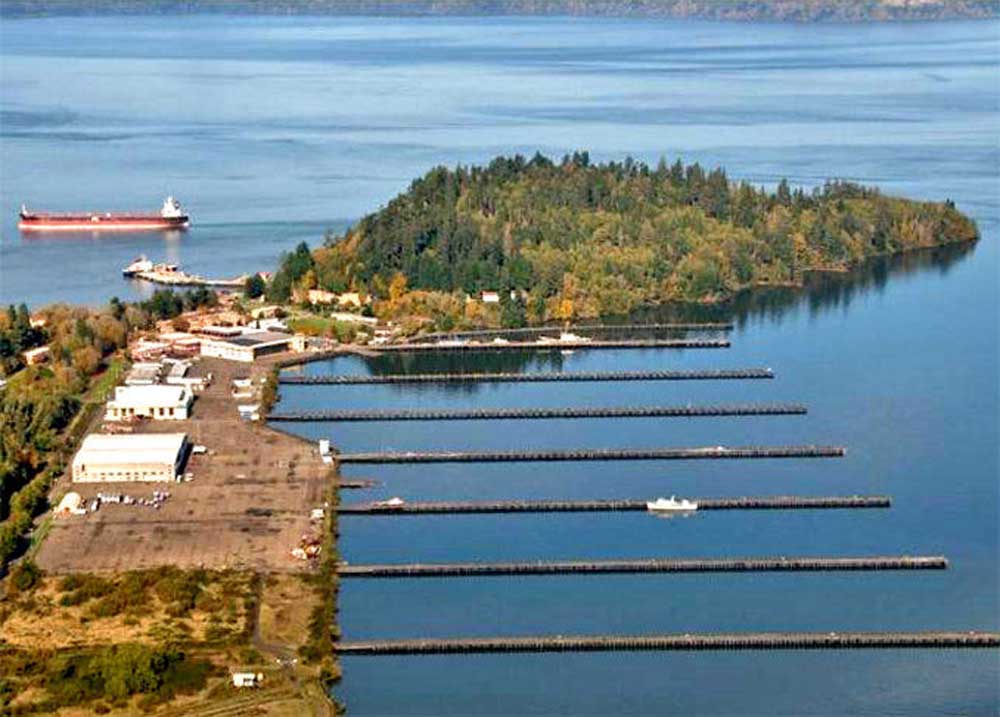Tongue Point changes ownership
Published 3:06 am Tuesday, December 5, 2017

- The industrial facilities at north Tongue Point have long been regarded as having great economic potential for Astoria. Exactly what that potential consists of has been a subject of intense debate.
North Tongue Point, the industrial dockside east of Astoria, has been sold by Washington Development Co. to Hyak Tongue Point, a tug and barge builder with plans to create a marine fabrication and repair facility.
The $4.1 million sale was predicated on the Port Commission agreeing to end the agency’s 10-year lease two years early.
Port Executive Director Jim Knight said the Port is clearing out property from the site and bringing a proposal to the Port Commission tonight for the disposal of a vessel stored there.
“It’s really tidying up before we go out the door,” he said.
The Port entered North Tongue Point in 2009 with hopes of turning the World War II-era Naval base into a shipping terminal. The 30-plus acre site, coveted for its access to a channel of the Columbia River and a dormant rail spur heading east, includes 140,000 square feet of space split between two former seaplane hangars and several finger piers.
The Port struggled to attract the large tenant and capital needed to modernize the site or warrant restoring the tracks. The tracks have been largely dormant since the closure of Astoria Plywood Mill and made impassible by a landslide in 2009. Staff have estimated the Port lost around $2 million operating the site.
Hyak Tongue Point is associated with Hyak Maritime, a company building tugs and barges whose CEO, Robert Dorn, recently approached the Port Commission with a plan to develop North Tongue Point into a full-service marine construction and repair facility.
Hyak inherited more than 30 subleases from the Port to tenants on the site, from storage for discount store Deals Only to large processor Pacific Coast Seafood leasing an entire hangar.
“For the time being, we’re happy with all the clients,” Dorn said. “Over time, we see it as a repair and fabrication facility. It’s really not a place where a lot of cargo operations can take place. We see it as an industrial park that lends itself to supporting commercial fishing and the tug and barge industry.”
Knight had mixed feelings about leaving North Tongue Point, disappointed the Port couldn’t develop the site but hopeful Hyak will add quality employment to the region.
“By simply getting out of the way and letting private industry take over, the community benefits,” he said. “In spite of feeling bad about leaving, I’m happy to help this new ship, barge-building business take off.”
One of the Port’s former tenants expected to benefit the most is marine repair and fabrication company WCT Marine & Construction, operating out of the site’s other seaplane hangar. WCT recently purchased hangar co-tenant J&H Boatworks, one of the Port’s first tenants at North Tongue Point, after the retirement of owner Tim Hill, becoming the site’s sole shipwright.
Hill and WCT owners Willie and Carol Toristoja all endorsed Hyak’s purchase.
“They’re the reason we were attracted to the property,” Dorn said of WCT. “Willie Toristoja I’ve known for 20 years. He’s one of the best in marine fabrication and repair.”
The Port had attempted to buy North Tongue Point for $4 million in 2000 with Alaska’s Clearwater Environmental Inc., a company planning a controversial ship-breaking facility. But the deal fell through, and the property was later sold for $4 million by the Department of State Lands to Washington-based Cresmont Inc. and shortly thereafter to Washington Development Co. for $4.2 million.
There is no master plan for developing North Tongue Point beyond trying to improve the site, help WCT add more business and become a replacement for the eight or nine smaller shipyards that have shut down over the last decade in the Puget Sound and along the Columbia River, Dorn said. “It’s a diamond in the rough with respect to helping people maintain fleets.”





